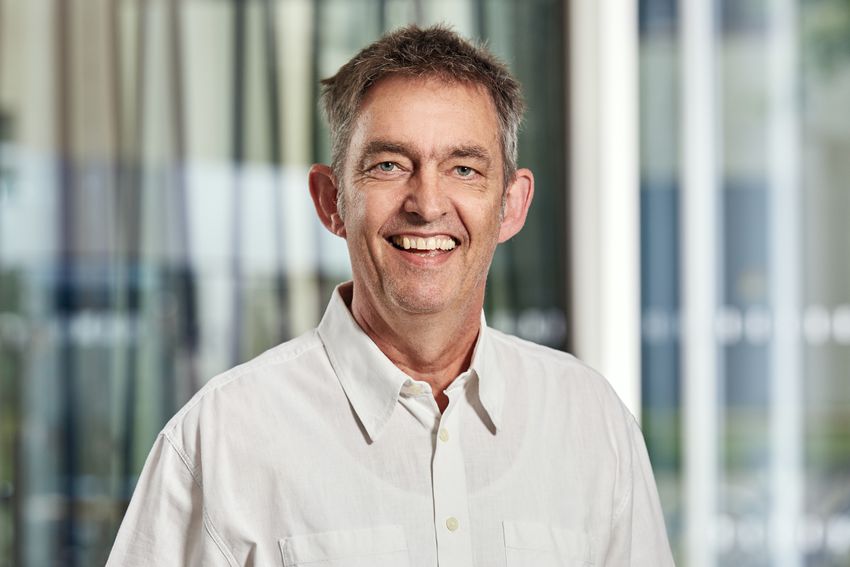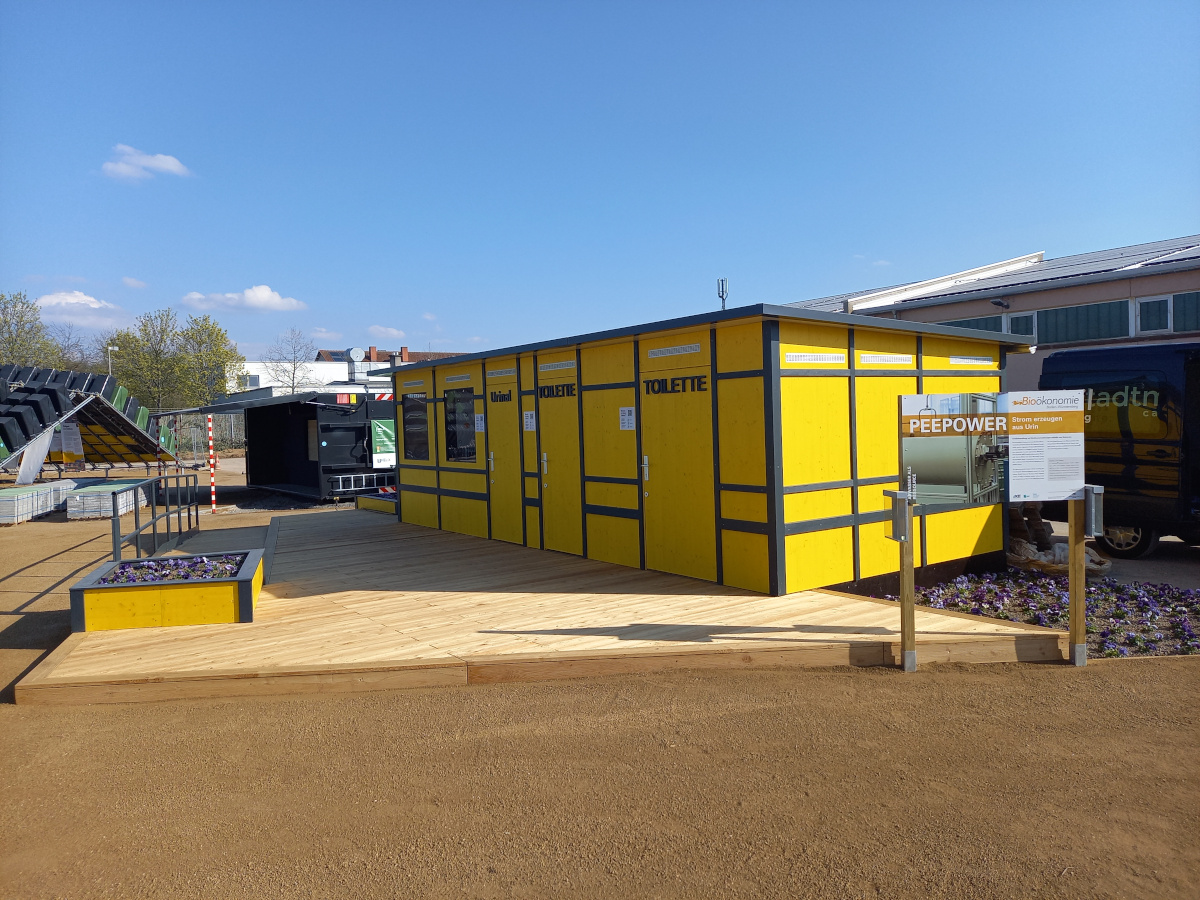Digitalisation & AI, Networking, Financing
Nicola Bünsch: "More needs to be done across the board"
How are job profiles in the cultural and creative industries …

Generating electricity from urine instead of discharging it into the water - chemist and university professor Harald Horn is researching this method, called PeePower TM. This year, he will be presenting it at the Future of Festivals - we spoke to him beforehand about it and asked how it can be implemented in the creative industries.
CCB Magazine:Mr. Horn, the proto-German goes to the loo and usually turns on the light - electricity is used, urine flows. You are working on a process called PeePower TM to convert urine back into electricity. Can you explain this to us?
Prof. Dr. Horn:With PeePower TM, bacteria are used to produce hydrogen from collected urine, which can be converted into electricity. This works via a bioelectrochemical system that produces hydrogen from urine. In short: you pee and you end up with electricity. This works so well with urine because urine is very salty and has a high electrical conductivity. Urine ultimately contains everything that the liver and kidneys want to get rid of - salts, but also nitrogen compounds and sufficient quantities of organic carbon, and electricity can only be generated from the latter.
With PeePower TM, bacteria are used to produce hydrogen from collected urine, which can then be converted into electricity. This works via a bioelectrochemical system that produces hydrogen from urine. In short: you pee and you end up with electricity
CCB Magazine:And how does this work in practice?
Prof. Dr. Horn:The treatment of urine in such bioelectrochemical systems was developed by Prof. Yannis Ieropoulos from the University of Southampton. The organic carbon in the urine is oxidized by bacteria at the anode and the resulting electrons are diverted to the cathode. On the way there, they can be used as electrical energy. At the cathode, two electrons and two protons, which also come from the process at the anode, are then converted into water with oxygen. At PeePower TM from Southampton, the whole process is housed in many small interconnected ceramic cylinders. Our reactor concept is also based on the same processes. However, the reactor is significantly larger at 100 liters and can treat up to 200 liters of urine per day. But compared to PeePower TM from Southampton we turn the two electrons and the two protons into hydrogen, which is then converted into electricity in a fuel cell.
How PeePower TM works!
CCB Magazine:Where is the process already being used?
Prof. Dr. Horn:In some places, for example at the annual Glastonbury Festival in the southwest of England. Here, the toilets were illuminated with it. We ourselves tested PeePower TM for the first time this year at the Bundesgartenschau (BuGa). We used the 100-liter reactor based on an immersible disk, which functions as a microbial electrolysis cell. The reactor actually ran without any malfunctions, which was a real success. We built a conventional eco-toilet as a system that works without water - the solid faeces were transported away on a conveyor belt and the urine was collected separately. The process is also used in developing countries, however, as the power supply is often not guaranteed here, for example in Uganda. Here, the paths to the toilets at a girls' school were illuminated. There were also campaigns such as "Pee to play", where games could be made to run on the Gameboy.
CCB Magazine:What problem does the process solve? Or to put it another way: why is PeePower needed at all?
Prof. Dr. Horn:We have been thinking for years about how we can avoid waste and use waste streams to generate energy - PeePower TM is one approach. After all, every person produces almost two liters of urine per day. The only important thing is that the urine is not diluted, otherwise it loses its effectiveness. This is why we cannot recover it from the municipal wastewater system, where it is already diluted. Other waste materials could also be used for reconversion, such as biowaste. However, urine is particularly suitable for the reasons mentioned above.


CCB Magazine:This year you are on a panel at Future of Festivals and will be presenting the process. How can festival operators use the process?
Prof. Dr. Horn:They are already using it to some extent. For example, you can use it to operate the lighting systems in the festival toilets or ventilation systems, but that's about as far as it goes. You also have to consider whether it is always worth setting up. Sometimes a festival only lasts one or two days. You also have to install the system first and the urine has to be treated. As only the organic carbon is needed for the reconversion of urine into electricity, nitrogen and phosphorus must also be recovered. The process is complex. But there are already so-called mobile urine systems that treat the urine completely. This could in turn be used to produce fertilizer.
CCB Magazine:Are there any legal hurdles? Or could anyone, or I, simply install such a system in my kitchen?
Prof. Dr. Horn:Well, try that, you need the reactor. It would be possible for larger settlements. And on the legal question: we are not allowed to discharge the treated urine into bodies of water. If we discharge it into sewage treatment plants, there are no objections. The situation is different for the production of fertilizer. This is not simply permitted in Germany and is also not fully accepted by potential users, as there are always residual pharmaceuticals in human excrement.
We will have to wait and see whether the process will be used more in the future. But it can already be used to operate lighting systems in festival toilets or ventilation systems
CCB Magazine:How has the response been so far from festival operators and visitors? Do you believe that the procedure will soon be used across the board?
Prof. Dr. Horn:No, I don't think so. Our process is only just being tested and we have to wait and see how it develops. We are also not yet at the point where we can simply buy the PeePower TM cells from our colleagues in England off the shelf. Nevertheless, the method will certainly be used more in the future.
CCB Magazine:Speaking of which, how expensive is the process? And what personnel or know-how is required?
Prof. Dr. Horn:How expensive it is depends on the scale on which it is used. The know-how is certainly required. Our colleagues in England calculate that it costs several thousand euros per toilet with several urinals.
CCB Magazine:And what effect does the process have on the carbon footprint? Is it even noticeable in the end?
Prof. Dr. Horn:This will certainly be noticeable because we save electricity. We will only be able to calculate this definitively once the system has been in use a few times.
CCB Magazine:About you as a person, what background do you have? How did you come to be involved with such methods?
Prof. Dr. Horn:I originally come from the environmental movement. Thirty-five years ago, we called for municipal wastewater treatment to be converted to near-natural processes. I'm not quite so sure about that today. Compared to today's standard processes, near-natural processes require a lot of space, which is hardly available in densely populated urban areas. As a chemical engineer, I also worked for a long time in the field of environmental analysis. I completed my doctorate in the 1990s and became a professor at Magdeburg-Stendal University of Applied Sciences. During my time in Magdeburg, I completed my habilitation and was subsequently offered a position at the Technical University of Munich. Since 2012, I have been Head of Water Chemistry and Water Technology at the Engler-Bunte Institute at KIT (Karlsruhe Institute of Technology).
CCB Magazine:Last question: Where else in the cultural sector could the process be used?
Prof. Dr. Horn:I think that museums or similar buildings with many visitors could play a role here. This is because we can only separate the various material flows at the point of origin. Once they have reached the wastewater treatment plants, it's too late. And the longer the reactor is in one place, the better. Over the last hundred years, however, our handling of wastewater streams has developed completely towards centralized treatment in a large plant. We are only at the beginning of a new research and development of decentralized concepts. Personally, I would be delighted if we could further develop wastewater treatment over the next decade.
Category: Knowledge & Analysis
Also a good read
Subscribe to our monthly newsletter!